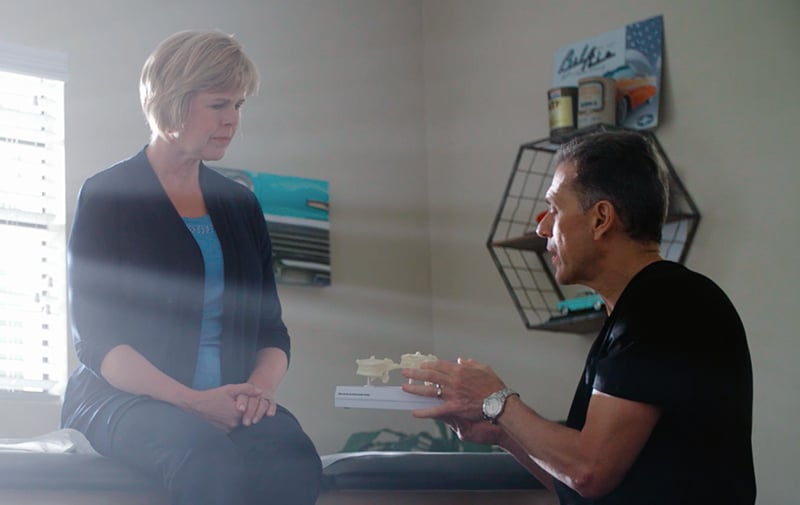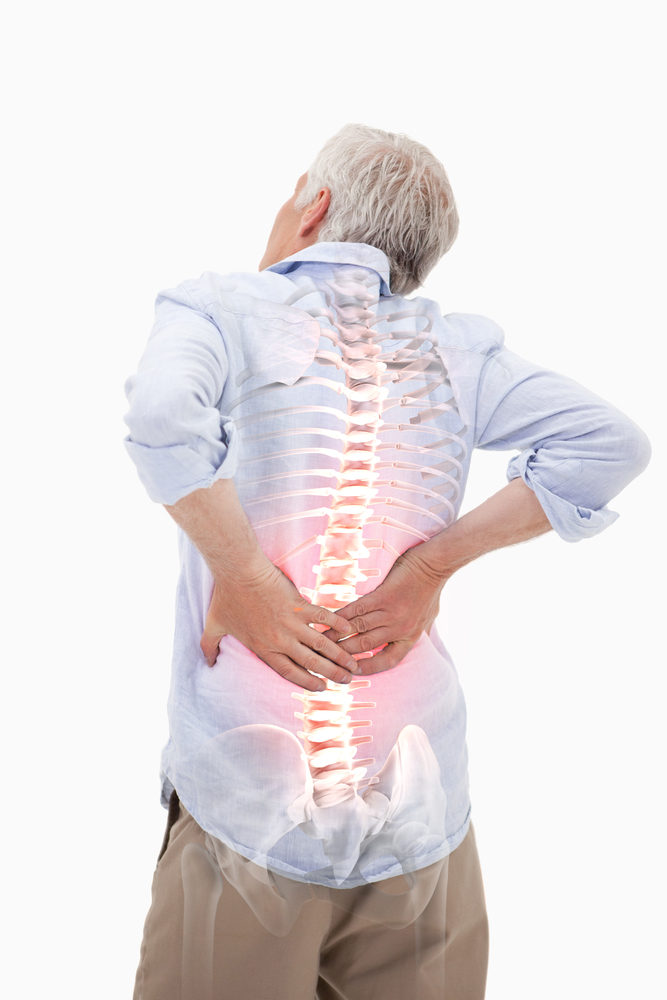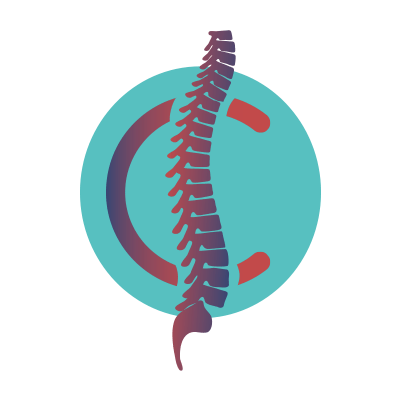Microdecompression
At Citrus Spine Institute, we specialize in minimally-invasive lumbar microdecompression (also known as microdiscectomy). We have used this alternative to traditional open surgery to bring lower back pain relief to thousands of patients. Learn more about this procedure, the benefits of choosing minimally-invasive lumbar microdecompression, and why Citrus Spine Institute is an excellent choice for your spinal solutions.

What is Microdecompression?
Microdiscectomy is a minimally-invasive procedure designed to alleviate leg pain and sciatica that results from compressed nerve roots. The procedure is performed on the lower or lumbar region of the spine and often provides complete symptom relief from the pain associated with those pinched nerves.
When it comes to discectomy, your surgeon can either opt for open surgery, which has higher risks and recovery times, or minimally-invasive, utilizing smaller incisions and tools.
At Citrus Spine, we’re experts in minimally-invasive spinal solutions, due to their greater benefit and shorter recovery time.
Minimally-invasive procedures like microdiscectomy surgery provide greater relief often accompanied by:
- Smaller incisions and less scarring
- Reduced damage to surrounding tissue
- Less postoperative pain
- Less blood loss
- Lower risk of infection
- Shorter hospital stays

All About Microdecompression (Microdiscectomy)
If you’re wondering how to spot the potential need for a microdiscectomy, what to do if you suspect you may need specialist attention, what exactly the procedure will entail, or how Citrus Spine can help you kiss that sciatica or leg pain caused by pinched nerves in your lumbar region goodbye, read on to get the information you need.
What Are the Signs You Need a Microdecompression?
What Are the Signs You Need a Microdecompression? A microdiscectomy is commonly used to treat pain resulting from compressed nerve roots – typically as a result of disc herniation or degenerative disc disease. Common symptoms that indicate a microdiscectomy might help you find relief include:
- Lower back pain that impacts your quality of life or ability to complete daily tasks
- Numbness, tingling, burning or sharp pain that radiates into the legs
- Incontinence and/or leg weakness, which are serious symptoms that indicate you should seek immediate medical attention
- Pain that’s exacerbated by standing, sitting, walking, or changing position
If you’re experiencing any of the symptoms above, and they don’t improve with conservative treatment methods like physical therapy, epidural steroid injections or a back brace, contact a back pain specialist. They will be able to determine if a microdiscectomy is the best option for your unique condition.

The Citrus Spine Difference
For us, the patient remains the king, in everything that we do.
01
02
03
We have performed more than 10,000 successful spine surgeries, most of which utilize minimally invasive techniques.
04
We’re affiliated with the North American Spine Society, and stay up to date on all advances in spinal health.
How to Prepare for Your Microdiscectomy
Due to the challenges of using a more minimally-invasive technique for surgical decompression, we recommend having and maintaining optimal body weight in order to achieve the best surgical outcome. Ask your physician to determine the best preparation methods for your unique situation and procedure. Follow their instructions and notify them if anything changes in the days leading up to your surgery.
What Are the Risks of Microdecompression?
What Is the Success Rate of Microdecompression Surgeries?
What to Expect the Day of Your Microdecompression
Upon your arrival, you will be greeted by staff that will help you check-in, sign any necessary paperwork, and take you to the room to prepare for your procedure (change into a gown, take any necessary medication, etc). You’ll meet with your anesthesiologist who will explain what to expect from the anesthetic they will employ, and you will be taken to the operating room where the discectomy will take place.
The surgery itself typically lasts less than two hours and, as long as there are no complications, is usually performed as an outpatient procedure where you can return home the same day. After your microdecompression, you will receive detailed post-operative instructions to help you and your loved ones care for your body during the recovery process.
What Does Microdecompression Look Like?
For your microdiscectomy procedure, you will be lying face down, under general anesthesia to ensure you’re comfortable.
Your surgeon will create a one- to one-and-a-half-inch incision at the level of the damaged disc in the lumbar spine. They will use an operating microscope to get a clear view of your nerve root – in some cases, they may need to make a small opening in your lamina (the back part of the vertebrae that covers your spinal cord) or remove a small portion of the facet joint to access the nerve root. Small instruments are then used to remove the bony spurs or disc fragments that have been irritating your nerve roots so that they no longer cause pain.
.jpg)

Microdiscectomy Recovery
What Is the Recovery Process for a Microdiscectomy?
After your spinal surgery, mild soreness and stiffness are to be expected – but this will improve as you recover. Your doctor will likely have some restrictions and requirements for you to follow to ensure an optimal recovery and prevent reherniation after your microdiscectomy. Here are some common restrictions following minimally-invasive microdecompression:
- Avoid driving or riding in a car for more than 30 minutes at a time. If long-distance drives are unavoidable, take frequent breaks to walk and stretch
- Don’t bend or twist your lower back
- Rest, but not too much. Take frequent short walks to improve recovery and lower the risk of excessive scar tissue and blood clots
- Don’t lift, push or pull anything over five pounds
- Steer clear of strenuous activities like jogging, cycling, weight lifting or aerobic exercise until you’re approved to participate by your healthcare provider
Your doctor may prescribe a lumbar spine brace for support and medications to help with pain management. Follow all of their instructions and attend every follow-up and physical therapy appointment to ensure you’re making a healthy recovery. Let your healthcare provider know of any changes or issues you’re having throughout your recovery.
Patients commonly wonder what gym exercises are okay or how they should sleep after undergoing microdiscectomy. There are no one-size-fits-all answers for these questions, as each patient’s medical history, current health status, and comorbidities are unique. If you’re concerned, speak with your specialists at Citrus Spine Institute to get clear and personalized answers to help aid your recovery and prevent reherniation.
Wondering If Microdecompression Is Right for You?
When it comes to minimally invasive spinal surgeries like microdiscectomy, it’s important to contact an orthopedic spine surgeon with the experience to recommend and perform the right solution for you. Schedule an appointment today to work with the experts at Citrus Spine to help relieve your lower back pain once and for all.

Contact Us
6099 W. Gulf to Lake Hwy
Crystal River, FL 34429

As a boutique medical practice offering non-surgical and surgical treatment options for spine patients, we provide white-glove service paired with trusted expertise.
Copyright © 2020 Citrus Spine Institute. All rights reserved.

